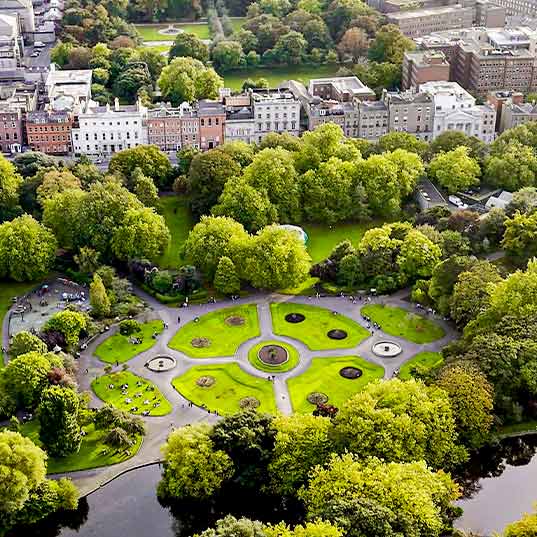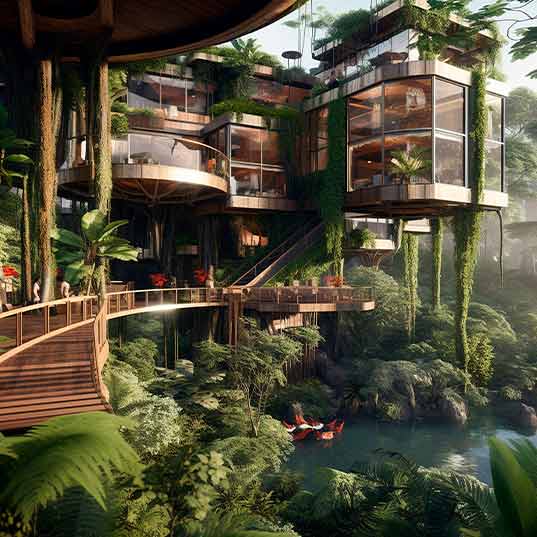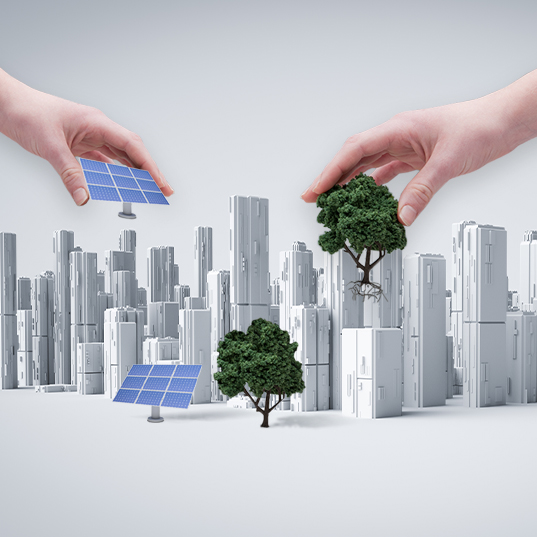Our sustainable future depends on regenerative cities
Cities need rebuilding and transforming into spaces that protect the environment and residents, while growing the local economy
The idea of sustainable regeneration has been around for some time. A concept that goes beyond sustainability and strives not only to avoid damage but to repair and regenerate. It seeks to build economies and communities that prosper so that the planet prospers, too.
So, what is the role of regenerative cities? Well, cities have become constantly expanding spaces that sacrifice the surrounding nature in the interests of creeping construction projects. The population of conurbations continues to grow. 68% of people will live in cities by 2050, the United Nations estimates. Cities might only occupy 3% of land, but they represent between 60 and 80 percent of energy consumption and 75% of carbon emissions.
“Cities might only occupy 3% of land, but they represent between 60 and 80 percent of energy consumption and 75% of carbon emissions”
Thus it should come as no surprise that cities are in the front line of the climate crisis. Redesigning them is essential to halting global warming.
What you’ll find in this article?
- The key to understanding sustainable regeneration of cities
- The need for a new (and sustainable) urban paradigm
- Are regenerative cities possible?
The key to understanding sustainable regeneration of cities
 What comes to mind when you think of the city of the future? Back in the 1970s, people believed that, in another 50 years, the streets would be full of flying cars, huge skyscrapers and engineering works using impossible forms. Now we are living in that present, the image we have of the city of the future is very different. At least of a sustainable city. We want fewer cars, more green spaces, resilient infrastructure and for the city to function on the basis of the circular economy.
What comes to mind when you think of the city of the future? Back in the 1970s, people believed that, in another 50 years, the streets would be full of flying cars, huge skyscrapers and engineering works using impossible forms. Now we are living in that present, the image we have of the city of the future is very different. At least of a sustainable city. We want fewer cars, more green spaces, resilient infrastructure and for the city to function on the basis of the circular economy.
And this is precisely what the sustainable regeneration of urban spaces seeks to do: redefine and reform the cities we presently inhabit.
Since it was established in 2007, the World Future Council has promoted the concept of the regenerative city as a space that protects the environment, develops the local economy, and benefits the social and cultural life of its inhabitants. A place that also constantly renews its resources, ensures the prosperity of its citizens, and becomes an indispensable tool for fulfilling the Sustainable Development Goals (SDGs) and fighting climate change.
“The regenerative city is a space that protects the environment, develops the local economy, and benefits the social and cultural life of its inhabitants"
The need for a new (and sustainable) urban paradigm
So, how do we transform what already exists into something sustainable? The new regenerative cities will have to fulfil the following key requisites:
- The circular economy: an indispensable change of model from a linear to a circular economy, governed by the philosophy of reduction, reuse and recycling of waste. Read more about it in this article. Cities are enormous consumers in the worst form of linear economy: producing, using, discarding. They are dominant polluters and over-exploit resources.
- Water conservation: the new model naturally confronts our use of water and demands that we reuse, and refrain from wasting, it. Regenerative cities need efficient water treatment facilities to be able to manage water properly and guarantee that everyone has access to this essential life source.
- Biodiversity, not just pleasing to the eye: green spaces in cities allow us to enjoy more natural, healthier and sustainable lives. In this sense, regenerative cities grow by respecting the nature that surrounds them and incorporating biodiversity into their design.
- A new energy model: to reduce greenhouse gas emissions and pollution, it’s necessary for the industrial and transport sectors, for example, to move from depending on fossil fuels to operating with renewable energies.
In the same way, a city’s buildings need to be energy efficient to avoid wasting resources and pumping emissions into the atmosphere, and this should in turn lower energy bills to citizens. - Resilient infrastructure: regenerative cities are designed to tackle, absorb, recover and learn from their problems and both natural and man-made disasters. Their buildings, facilities and structures are built and reformed to avoid, withstand and contain any kind of catastrophic event, protecting citizens, especially the most vulnerable.
- Socially sustainable cities: regeneration of urban spaces needs to promote cohesive land development. It should be well planned, favoring pedestrians and the use of public transport. Regenerative cities should be designed with people at their heart, ensuring that everyone can access all the services without having to travel far.
“Regenerative cities should be designed with people at their heart”
- Increased citizen participation: in this sense, regenerative cities need to be built for, and with the involvement of, everyone. At the very least, the views, ideas and experiences of all inhabitants should be taken into account. Developing this type of model requires institutions, companies and civil society to work side by side to redesign the spaces they share. And to do so, of course, while taking nature into account.
Spaces for a new model of sustainaible coexistence
Are regenerative cities possible?
As we have seen above, the new model city is based on the most demanding requisites. But each of these conditions is necessary to guarantee a sustainable future for the planet. The road is long, but some cities have already decided to take their first step toward urban sustainable regeneration.
🏙 London and harmonious living spaces
Companies in the UK capital have come together to develop a series of interwoven urban projects that seek to revitalize and recover disused areas such as housing estate courtyards and abandoned industrial sites such as that of the former Battersea power station. The aim is to attract people to live and make use of what is premium inner-city land, fostering community living and promoting local commerce and neighbourhood relations.
Life in these areas revolves around more than shops, with multiple activities held throughout the year. Residents are encouraged to enjoy, meet up and while away the time in accessible pedestrianized zones.
🌄 Cape Town, energy efficiency reforms
The City Hall of this South African metropolis decided to throw its weight behind a more sustainable and efficient energy model, when it adopted in 2010 its Energy and Climate Action Plan, a pioneering program linking energy and climate to the city’s development strategy. Some 40 districts are participating in the scheme, in which over 120 projects have been carried out.
One of the most promising outcomes has been the emission reductions achieved by modernizing the roofs of more than 10,500 homes, thus avoiding the emission of around 7,400 tonnes of CO2 per year.
🏬 From disused industrial parks to social activity hubs
One urban regeneration trend, increasingly popular in cities worldwide, is that of transforming abandoned industrial estates and buildings into spaces for cultural activities and improved neighbourhood facilities.
To mention just a few, the repurposing of the Zollverein Coal Mine Industrial Complex in Germany, today a Unesco world heritage site, and Kleefse Ward industrial park in the Netherlands, now a technology campus. The conversion of Lisbon’s LX Factory into a retail outlet.
There are thousands, if not millions, of initiatives that can be undertaken under the scope of regenerative cities. But change is urgent. People and the planet need new urban models. And to live together in new kinds of cities.
Sources:
- https://www.worldfuturecouncil.org/wp-content/uploads/2016/01/WFC_2010_Regenerative_Cities.pdf
- https://elpais.com/elpais/2021/05/17/alterconsumismo/1621256657_253279.html
- https://www.sostenibilidad.com/desarrollo-sostenible/que-son-los-objetivos-de-desarrollo-sostenible/







